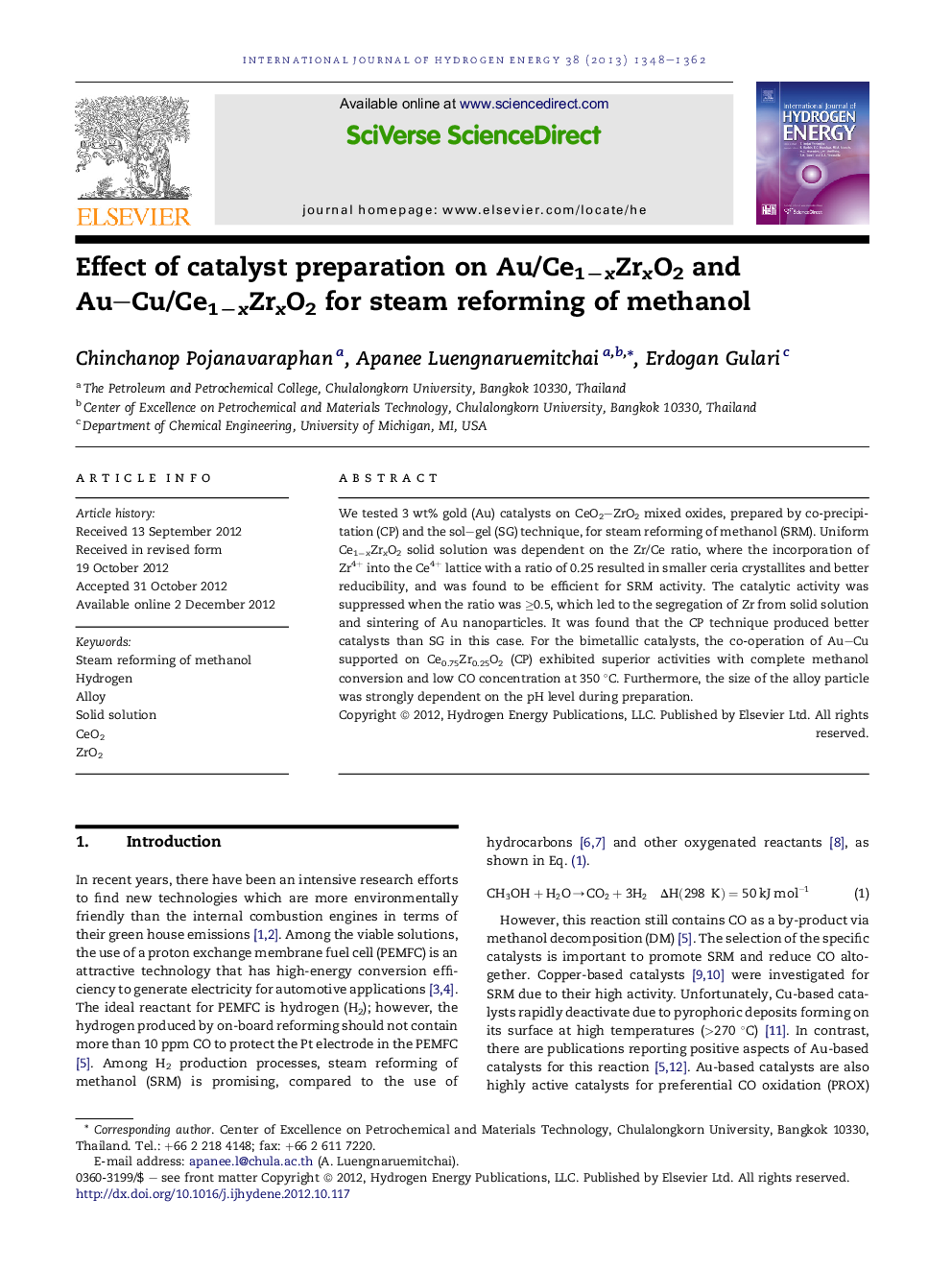| Article ID | Journal | Published Year | Pages | File Type |
|---|---|---|---|---|
| 1275919 | International Journal of Hydrogen Energy | 2013 | 15 Pages |
We tested 3 wt% gold (Au) catalysts on CeO2–ZrO2 mixed oxides, prepared by co-precipitation (CP) and the sol–gel (SG) technique, for steam reforming of methanol (SRM). Uniform Ce1−xZrxO2 solid solution was dependent on the Zr/Ce ratio, where the incorporation of Zr4+ into the Ce4+ lattice with a ratio of 0.25 resulted in smaller ceria crystallites and better reducibility, and was found to be efficient for SRM activity. The catalytic activity was suppressed when the ratio was ≥0.5, which led to the segregation of Zr from solid solution and sintering of Au nanoparticles. It was found that the CP technique produced better catalysts than SG in this case. For the bimetallic catalysts, the co-operation of Au–Cu supported on Ce0.75Zr0.25O2 (CP) exhibited superior activities with complete methanol conversion and low CO concentration at 350 °C. Furthermore, the size of the alloy particle was strongly dependent on the pH level during preparation.
► The incorporation of Zr4+ inside Ce4+ lattice formed the CexZr1−xO2 solid solution. ► The co-precipitation technique provided better solid solution than the sol–gel technique. ► High Zr/Ce ratios caused an inhomogeneous solid solution and Au agglomeration. ► The Au–Cu alloy, present in the bimetallic catalyst, significantly improved the catalytic activity.
